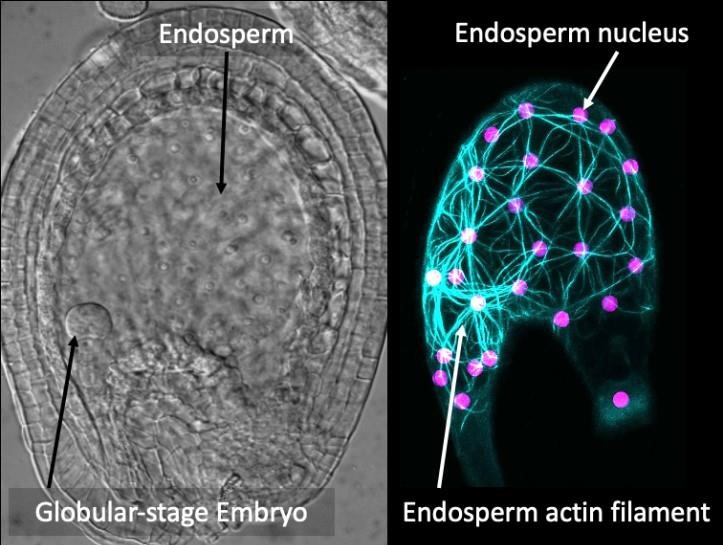Using the established real-time live-cell imaging technique and genetics, the researchers figured out how the early-stage endosperm A. thaliana development takes place from beginning to end.

Researchers found that actin filament helps determine seed size.
“We found that cellular structural components called cytoskeletons show unique dynamics during endosperm development and also found that one of the cytoskeletons, called actin filament, involves in seed size determination,” Kawashima said. “We believe that if we can increase the size of grain crop seeds by manipulating actin filament dynamics in the endosperm, we could go a long way to reducing food insecurity.”
UK professor Ling Yuan, also with the UK Department of Plant and Soil Sciences, was another member of the team. Additional contributors to the paper include scientists from Nagoya University in Japan and Gregor Mendel Institute in Austria.
Research reported in this publication was supported by the?National Science Foundation?Division of Integrative Organismal Systems?under Award Number?1928836.?The opinions, findings and conclusions or recommendations expressed are those of the author(s) and do not necessarily reflect the views of the National Science Foundation.
Source : uky.edu